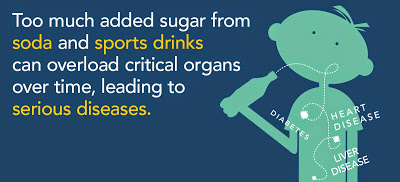Diabetes is a condition that is diagnosed on the basis of elevated blood sugars. We know that high blood sugars over time can cause damage to the heart, kidneys, eyes, nerves, and other organs, so an important part of diabetes treatment is to keep blood sugars as normal as possible. Some medications used to treat diabetes can cause low blood sugars if more is taken than what is needed. So, is having low blood sugars a normal part of being treated for diabetes?
(for THE BOTTOM LINE, skip to below)
As I discussed at this weekend’s Rocky Mountain Internal Medicine conference in Banff, Canada, my first point on this important topic is that having low blood sugars in diabetes is more common than we think. Several studies have demonstrated that if blood sugars in diabetics are continuously monitored for 24 hours, a significant proportion of people are having low blood sugars – and don’t know it. There are a couple of reasons why you may not know you are having lows: symptoms of lows (shakes, sweats, heart pounding, etc) decrease after 10-15 years of having diabetes, and older people may not get these symptoms even early in their diabetes. Low sugars can have some atypical symptoms as well, such as nightmares. A fall in the middle of the night in an older individual could be due to a low blood sugar, so if this is happening, it’s important to check.
My second point is that low blood sugars have many negative effects. A low sugar can be dangerous if it happens behind the wheel of a car or while operating machinery – this is why it’s mandatory to check sugars before doing these things, if you are on medications that can cause low blood sugars. A severely low sugar can cause a seizure or heart rhythm problems, though fortunately, severely low sugars are not common, especially if diabetes is managed well.
An important aspect of having low blood sugars that is sometimes overlooked is the effect that low sugars has on quality of life. Having a low sugar is a scary feeling, and people who have had lows often fear – a lot – the possibility that it could happen again, and their family does too. Seven to 10% of people who have a low blood sugar while at school or work will go home and miss the rest of the day, and some will miss the next day too. Having a low sugar requires taking in carbohydrate calories to correct it, which can make it harder for overweight people to lose weight. Having low sugars is expensive too, as it ends up costing in lost time at work, extra meter strips to check sugars, and so on.
The good news is that not all medications to treat diabetes cause lows. Insulin and two classes of oral medications for Type 2 diabetes called sulfonylureas (includes glyburide, gliclazide, and others) and meglitinides (includes repaglinide) are the ones that can cause low blood sugars. There are many other classes of medications to treat Type 2 diabetes that do not cause low blood sugars.
As far as insulin goes, insulin is required to treat Type 1 diabetes, and it is also required for many Type 2 diabetics, depending on how advanced their diabetes is. However, there are different kinds of insulins available, some with lower risk of low sugars than others.
Some diabetes medications can also be adjusted depending on what you feel like eating. For these medications, lower doses can be taken if less food is eaten to avoid a low blood sugar, rather than having to eat a regimented meal pattern every day to avoid your diabetes medication causing a low blood sugar. Some diabetes medications can also be decreased for days that you are more active, rather than having to eat more on active days to avoid having a low sugar.
THE BOTTOM LINE: Low blood sugars do NOT have to be a normal part of having diabetes. I’m a big believer in adjusting diabetes medications to fit a person’s lifestyle, rather than a patient having to alter their lifestyle to fit their medications (and avoid lows). If you are struggling with low blood sugars as part of your diabetes treatment, speak to your doctor to find out what can be done to decrease the risk of lows, or possibly eliminate the risk entirely.
Dr Sue Pedersen www.drsue.ca © 2012
Follow me on Twitter for daily tips! @drsuepedersen












